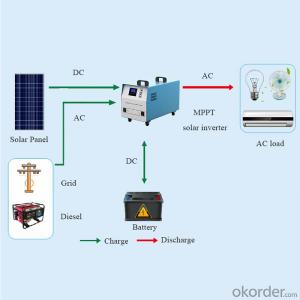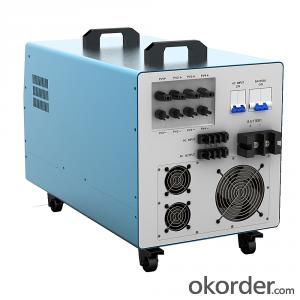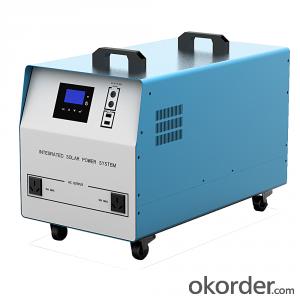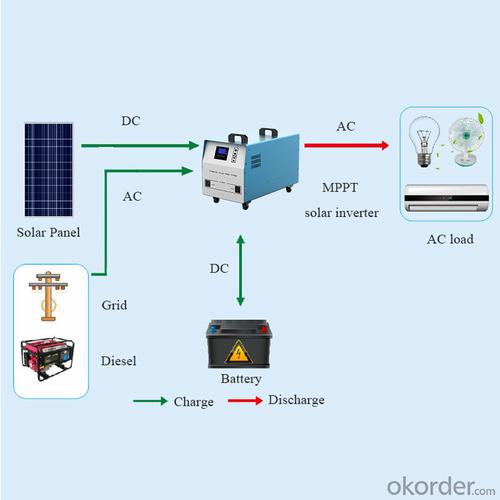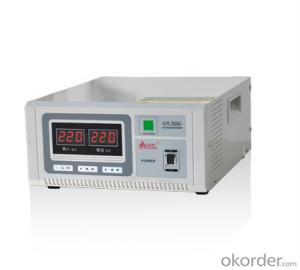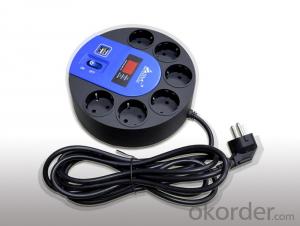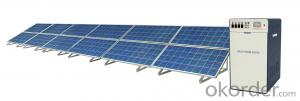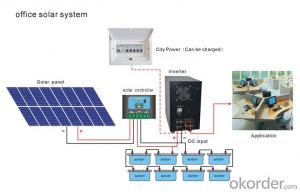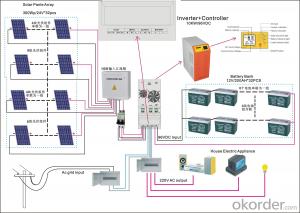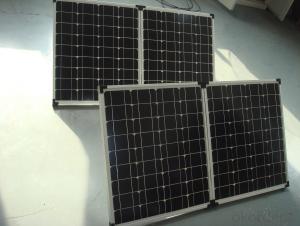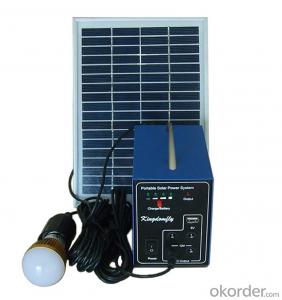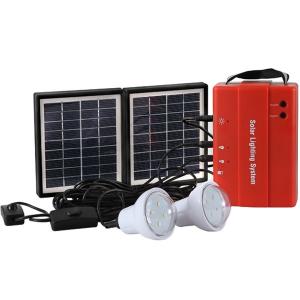5000w Portable Solar Generator Solar Power Home System kit
- Loading Port:
- China main port
- Payment Terms:
- TT OR LC
- Min Order Qty:
- 1 pc
- Supply Capability:
- 500 pc/month
OKorder Service Pledge
OKorder Financial Service
You Might Also Like
Specification
1. Features :
Professional design to promote system reliability
*Using international well-know brand semiconductor device such as IR.TI.ST.ON.NXP and so on.
*Using industrial MCU total digital technology, without any adjustable resistance, strong anti-interference ability, no aging and drift..
*Super-high charging and DC to AC inverter efficiency, Significantly reduce temperature rise of products .
High MPPT Tracking efficiency
*MPPT Tracking efficiency up to 99.9%,System power generation efficiency up to 98% to improves system efficiency and reduces system costs.
High Transfer efficiency
*Charging efficiency up to 98.4%
*DC to AC inverter efficiency up to 90%
Minimal stand-by power consumption
*The current consumption ≤ 40mA(24V)
Intelligent battery management
*three phase time charge battery, which contains MPPT charge, constant voltage charge and float charge, which helps to extend the life of battery.
*Significantly extends the battery life up to 50% base on intelligent temperature compensation charge and discharge management
*External battery can be added to expand battery capacity
*Intelligent battery energy management to ensures the battery operates in shallow charge and discharge states, significantly extending battery life.
Flexible setting of three output modes
*City power priority mode
*Battery priority mode
*EPS Mode
Excellent load adaptation
*Support resistive load, inductive load, capacity load, half wave load, etc
*Strong overload capacity
*Peak current ratio up to 300%
*Pure sine wave output
*output voltage level can be selected
*Sudden discharge, output waveform distortion rate low than 5%
Perfect protect function
*Battery reverse connection protection
*The solar panel reverse connection protection.
*To prevent the battery discharge to the solar panel at night.
*Battery low voltage disconnect and reconnect protection.
*Output short circuit protection
*Output overload protection
*Transformer isolation, safe and stable
2. Technical Parameter
3. Image
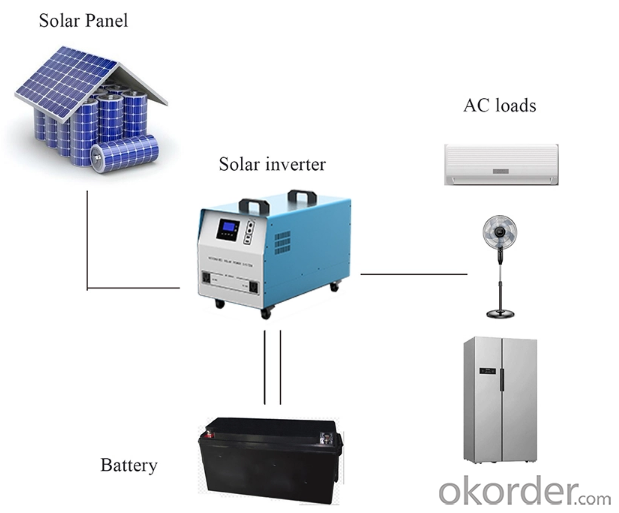
4.FAQ
Q:DO YOU HAVE ANY CERTIFICATION FOR YOUR PRODUCTS?
A:We have ISO9001:2015,CE、RoHS certifications for all of our products.
Q:DO YOU HAVE MOQ FOR PLACE ORDER?
A:Low MOQ,1pe for sample checking is available
- Q: How do I maintain and clean my solar energy system?
- To maintain and clean your solar energy system, there are several key steps to follow. 1. Regular Inspection: Conduct regular inspections to ensure that your solar panels are in good condition. Look for any signs of damage, such as cracks or loose connections. Additionally, check for any debris or leaves that may have accumulated on the panels. 2. Cleaning: Clean your solar panels periodically to maintain their efficiency. Start by removing any loose debris, such as leaves or dirt, using a soft brush or a leaf blower. Next, use a non-abrasive sponge or cloth to gently scrub the panels with a mixture of mild soap and water. Avoid using harsh chemicals or abrasive materials that can damage the panels. 3. Safety Measures: Always prioritize safety when cleaning your solar panels. Ensure that you turn off the system and disconnect it from the electrical grid before starting any maintenance work. If your solar panels are installed on the roof, use proper safety equipment, such as a harness or ladder, to prevent accidents. 4. Professional Service: It is recommended to schedule professional maintenance at least once a year. Professional technicians can identify any potential issues, perform detailed inspections, and carry out any necessary repairs. They have the expertise and tools to ensure that your solar energy system operates optimally. 5. Monitor Performance: Keep track of your solar energy system's performance regularly. Most solar inverters come with monitoring systems that allow you to track energy production. This will help you identify any drop in efficiency and address it promptly. 6. Shading: Regularly trim any trees or shrubs that may cast shade on your solar panels. Shading can significantly reduce the system's efficiency, so it is essential to ensure that your panels receive maximum sunlight. By following these maintenance and cleaning practices, you can ensure that your solar energy system stays in top condition, maximizing its efficiency and lifespan.
- Q: Can solar energy systems be used in residential areas with homeowners associations?
- Yes, solar energy systems can be used in residential areas with homeowners associations (HOAs). However, the specific rules and regulations regarding solar energy systems may vary depending on the HOA. Some HOAs may have restrictions on the size, type, and placement of solar panels, while others may have specific guidelines in place to ensure aesthetic and architectural harmony within the community. In the United States, the federal government has enacted legislation to protect homeowners' rights to install solar energy systems, including within HOAs. The Solar Rights Act, signed into law in 1978, prohibits HOAs from outright banning the installation of solar energy systems. However, HOAs are allowed to impose reasonable restrictions to protect the community's overall aesthetics and property values. If you live in a residential area with an HOA and are interested in installing a solar energy system, it is important to review the HOA's guidelines and restrictions. Many HOAs have specific processes and procedures for homeowners to follow when seeking approval for solar panel installations. This may involve submitting a design proposal, obtaining necessary permits, and complying with any architectural or aesthetic requirements. It is also worth noting that solar energy systems can offer various benefits for homeowners and the community as a whole. They can reduce electricity costs, increase property values, and contribute to a cleaner and more sustainable environment. With the increasing popularity and affordability of solar energy, many HOAs are becoming more receptive to solar panel installations and are updating their guidelines to accommodate them. If you are considering installing a solar energy system in a residential area with an HOA, it is recommended to consult with the HOA board, review the guidelines, and work with a reputable solar installation company that has experience navigating the requirements of HOAs. By following the proper procedures and working within the guidelines, it is possible to enjoy the benefits of solar energy while maintaining harmony within the residential community.
- Q: Can solar energy systems be integrated into existing electrical systems?
- Yes, solar energy systems can be integrated into existing electrical systems. These systems can be designed to work alongside traditional electricity sources, allowing solar energy to supplement or replace grid power. Integration typically involves installing solar panels, inverters, and a connection to the existing electrical system. This integration enables the seamless use of solar power and helps reduce reliance on fossil fuels.
- Q: Can a solar energy system be connected to the grid?
- Yes, a solar energy system can be connected to the grid. In fact, many solar energy systems are designed to be grid-tied, allowing excess electricity generated by the system to be fed back into the grid. This enables homeowners and businesses to earn credits for the surplus energy produced and use it when their solar panels are not generating electricity, such as during nighttime or cloudy days. Grid connection also provides a reliable backup power source when solar production is insufficient.
- Q: How do solar energy systems affect the roof's lifespan?
- Solar energy systems can actually extend the lifespan of a roof. The panels provide an additional layer of protection to the roof, shielding it from harmful elements like UV rays and extreme weather conditions. Additionally, the panels help to regulate the temperature of the roof, reducing thermal stress and preventing premature aging.
- Q: How does the quality of solar panels impact energy production?
- The quality of solar panels directly affects energy production. Higher quality panels generally have better efficiency and are able to convert more sunlight into electricity. This means that high-quality panels can produce more energy for a given amount of sunlight, resulting in increased energy production. On the other hand, low-quality panels may have lower efficiency and degrade more quickly, leading to decreased energy production over time. Therefore, investing in high-quality solar panels is crucial for maximizing energy production and the overall performance of a solar energy system.
- Q: Can solar panels be installed on RVs or boats?
- Solar panels can be installed on both RVs and boats, offering a sustainable and efficient way to generate electricity while on the move. These panels are increasingly popular and provide a reliable power source for various appliances and equipment used in RVs and boats, including lights, fans, refrigerators, and electronic devices. Typically mounted on the roof or deck, the panels capture sunlight and convert it into usable energy. This enables RV and boat owners to decrease their reliance on traditional power sources, granting them the freedom to explore remote areas without the need for electrical hookups. Furthermore, solar panels on RVs and boats contribute to environmental preservation by reducing carbon emissions. Nevertheless, it is crucial to consider power requirements and available space before installation, as well as ensuring proper maintenance and installation for optimal efficiency and durability.
- Q: How much space is needed for a solar energy system installation?
- The amount of space needed for installing a solar energy system relies on a variety of factors, including the system's capacity, the type of panels utilized, and the amount of sunlight accessible in the region. On average, a residential solar system typically necessitates approximately 100 to 400 square feet of unshaded rooftop space per kilowatt of solar panels. Nevertheless, it is essential to acknowledge that solar panels can also be set up in alternative locations, such as ground-mounted systems or as part of building-integrated photovoltaics (BIPV), where the panels are integrated into the structure of the building. In these instances, the space requirements can vary significantly based on the specific design and necessities. Moreover, it is crucial to take into account any local regulations or limitations that might influence the installation procedure. Certain areas may have zoning restrictions, setback requirements, or aesthetic considerations that could impact the available space for solar panel installation. In conclusion, it is advisable to consult with a professional solar installer who can evaluate your specific requirements, assess the available space, and provide accurate information regarding the space requirements for installing a solar energy system in your particular circumstances.
- Q: Can solar energy systems be installed on sports stadiums?
- Yes, solar energy systems can be installed on sports stadiums. Many stadiums around the world have already installed solar panels to generate clean and renewable energy. These systems can help offset the energy demand of the stadium, reduce carbon emissions, and save costs in the long run.
- Q: Can solar energy systems be combined with energy storage technologies like batteries?
- Yes, solar energy systems can be combined with energy storage technologies like batteries. This combination allows for the storage of excess solar energy generated during the day for use during nighttime or cloudy periods. It helps to ensure a continuous and reliable power supply, even when sunlight is not available, thereby maximizing the efficiency and effectiveness of solar energy systems.
Send your message to us
5000w Portable Solar Generator Solar Power Home System kit
- Loading Port:
- China main port
- Payment Terms:
- TT OR LC
- Min Order Qty:
- 1 pc
- Supply Capability:
- 500 pc/month
OKorder Service Pledge
OKorder Financial Service
Similar products
Hot products
Hot Searches
Related keywords
